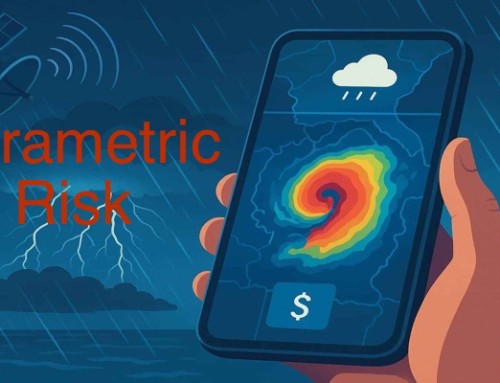If you’re new to the world of insurance, the technical terms can seem baffling – even if you’re not Homer Simpson. In no particular order, here’s a brief look at what some of them actually mean…
Insurance is an arrangement by which a company undertakes to provide a guarantee of compensation for specified loss, damage, illness, or death in return for payment of a specified amount of premium.
The insurance policy is the legal contract that defines the extent to which agreed events are covered by the insurer, as well as the premium that will have to be paid by the insured.
An insurance premium is the payment or instalment you agree to pay in order to have insurance cover. You enter into a contract (the policy) with an insurance company to guarantee payment in case of damage or loss and, in exchange, you agree to pay a certain, smaller amount of money. Effectively, you are exchanging the possibility of a much greater loss for the certainty of paying out a smaller amount of money instead.
Underwriters decide if applications for insurance cover should be accepted and, if so, what the terms and conditions (such as premium to be paid) of that acceptance are. To do this, they assess the risk of insuring a person or company according to the likelihood of a claim being made.
An insurance claim is a formal request to an insurance company asking for a payment based on the terms of the insurance policy. Insurance companies review claims for their validity and then pay the insured once approved.
Insurance losses are the total claims that an insurance company expects to pay out based on the insurance cover it has sold in its policies.
Losses come in three components: Claims already paid, claims currently being processed (Outstanding Loss Reserves: OSLR) and claims not yet known about (Incurred But Not Reported: IBNR) . Insurance companies use the services of actuaries to estimate what the IBNR losses are likely to be based off statistical modelling.
Reinsurance is often described as insurance for insurance companies. It’s a way for insurance companies to transfer some of the financial risk they assume when selling insurance policies. Insurance companies do this by ceding (passing) some of their risk to another insurance company, known as the reinsurer.
There are two basic types of reinsurance arrangement: facultative reinsurance and treaty reinsurance. Facultative reinsurance is designed to cover single (or defined packages of) risks, whereas treaty reinsurance covers a ceding company’s entire book of business.
Excess of loss is a form of non-proportional reinsurance in which the reinsurer indemnifies the ceding company for losses that exceed a specified financial limit. Conversely, quota share is a form of proportional reinsurance in which the insurer and reinsurer share all insurance liability, premium and losses in line with an agreed quota share.
A captive insurance company is a special type of insurance company that has been formed exclusively to insure the insurance risks of its parent corporation.
Whilst certain major corporations may have the know-how and resources to administer a captive internally, many prefer to outsource their captive management to a professional service provider. This led to the concept of non-owned captives aka rent-a-captives.
Insurance-linked securities (ILS) are financial instruments whose values are driven by insurance loss events, for example: natural catastrophes such as hurricanes or earthquakes. Investors looking to spread risk are attracted to ILS products is because as investments they are unrelated to the stock market.
A sidecar is a reinsurance company created and funded by investors, such as hedge funds, to participate on a quota share basis in the provision of extra insurance capacity to a reinsurer (known as the sponsor), often in respect of its catastrophe business (e.g. hurricanes). The sidecar’s investors assume a percentage of the sponsor’s risk in return for a percentage of the premium in line with the agreed quota share split.
Sidecars are therefore a convenient structure to allow third-party capital to be deployed within a reinsurance business. They’re normally fully-collateralised, meaning that funds are always available to pay claims in the event of losses. Bermuda and the Cayman Islands are the main centres for sidecar transactions.
First marketed in the 1990s, catastrophe bonds (known as cat bonds) are risk-linked securities that are used to transfer a specified set of risks from a sponsor to investors. Cat bonds allow the issuer to receive funding from the bond only if specific insured conditions – such as an earthquake or a tornado – occur.
If an event protected by the bond activates a pay-out to the insurance company, the obligation to pay interest and repay the principal to the investors is either deferred or completely forgiven. Such bonds have short maturity dates of 3-5 years, and the primary investors are hedge funds, pension funds, and other institutional investors.
Buying an insurance company means taking possession of its assets, but also its liabilities, including those that will only be discovered at a future date such as future insurance claims. An acquiring company might therefore demand that the company being acquired purchase run-off insurance to protect itself from these legacy liabilities.
Aside from transactions involving the acquisition of an entire company, there can also be portfolio transfers, which involve only a specific book of business in a re/insurer’s portfolio. For example, an insurer might want to exit the aviation sector in a specific market but still maintain its other lines of business in the same market, in which case it would sell its aviation book of business as a portfolio transfer to another insurance company. A price is agreed and, as no new business will be written, the insurance policies transferred eventually run their course and end.
Bermuda is often called the World’s Risk Capital. Are you interested in a career in insurance in Bermuda? Visit our career portal now and see what’s new.







Leave A Comment
You must be logged in to post a comment.